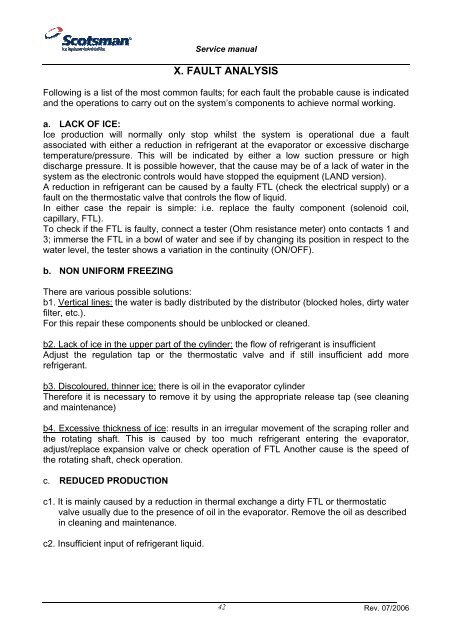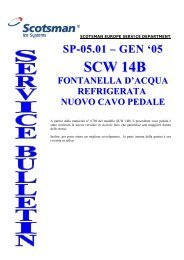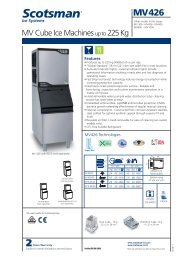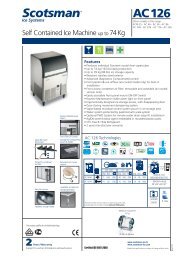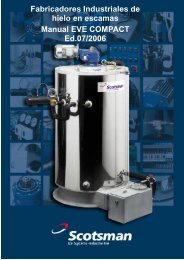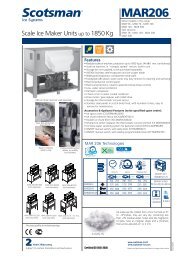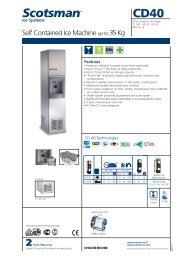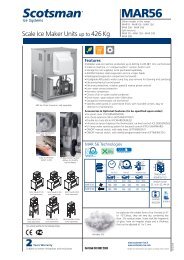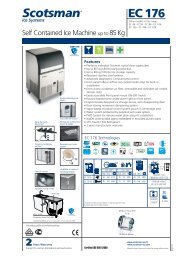Ed. 07/2006 - Scotsman
Ed. 07/2006 - Scotsman
Ed. 07/2006 - Scotsman
Create successful ePaper yourself
Turn your PDF publications into a flip-book with our unique Google optimized e-Paper software.
Service manual<br />
X. FAULT ANALYSIS<br />
Following is a list of the most common faults; for each fault the probable cause is indicated<br />
and the operations to carry out on the system’s components to achieve normal working.<br />
a. LACK OF ICE:<br />
Ice production will normally only stop whilst the system is operational due a fault<br />
associated with either a reduction in refrigerant at the evaporator or excessive discharge<br />
temperature/pressure. This will be indicated by either a low suction pressure or high<br />
discharge pressure. It is possible however, that the cause may be of a lack of water in the<br />
system as the electronic controls would have stopped the equipment (LAND version).<br />
A reduction in refrigerant can be caused by a faulty FTL (check the electrical supply) or a<br />
fault on the thermostatic valve that controls the flow of liquid.<br />
In either case the repair is simple: i.e. replace the faulty component (solenoid coil,<br />
capillary, FTL).<br />
To check if the FTL is faulty, connect a tester (Ohm resistance meter) onto contacts 1 and<br />
3; immerse the FTL in a bowl of water and see if by changing its position in respect to the<br />
water level, the tester shows a variation in the continuity (ON/OFF).<br />
b. NON UNIFORM FREEZING<br />
There are various possible solutions:<br />
b1. Vertical lines: the water is badly distributed by the distributor (blocked holes, dirty water<br />
filter, etc.).<br />
For this repair these components should be unblocked or cleaned.<br />
b2. Lack of ice in the upper part of the cylinder: the flow of refrigerant is insufficient<br />
Adjust the regulation tap or the thermostatic valve and if still insufficient add more<br />
refrigerant.<br />
b3. Discoloured, thinner ice: there is oil in the evaporator cylinder<br />
Therefore it is necessary to remove it by using the appropriate release tap (see cleaning<br />
and maintenance)<br />
b4. Excessive thickness of ice: results in an irregular movement of the scraping roller and<br />
the rotating shaft. This is caused by too much refrigerant entering the evaporator,<br />
adjust/replace expansion valve or check operation of FTL Another cause is the speed of<br />
the rotating shaft, check operation.<br />
c. REDUCED PRODUCTION<br />
c1. It is mainly caused by a reduction in thermal exchange a dirty FTL or thermostatic<br />
valve usually due to the presence of oil in the evaporator. Remove the oil as described<br />
in cleaning and maintenance.<br />
c2. Insufficient input of refrigerant liquid.<br />
42<br />
Rev. <strong>07</strong>/<strong>2006</strong>


